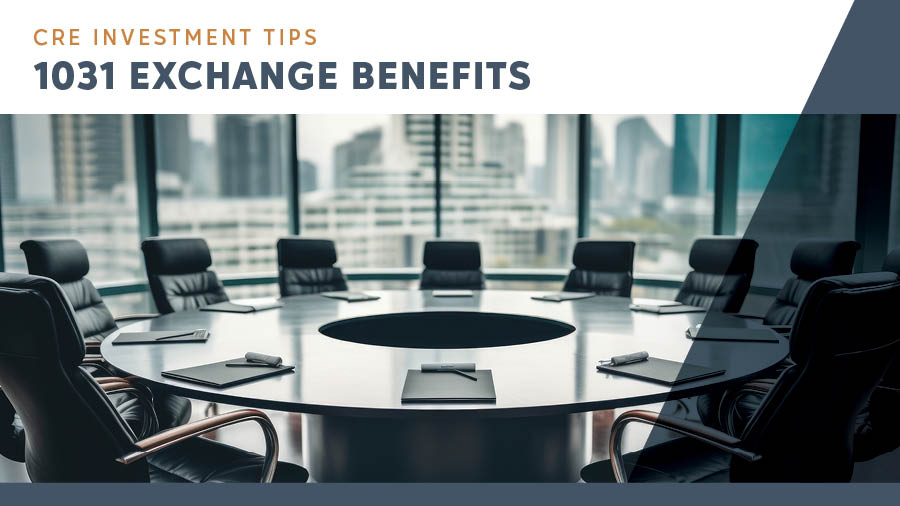
Beyond Tax Deferral: How 1031 Exchanges Strengthen Your Investment Strategy
For commercial property owners, a 1031 Exchange is one of the most effective tools for deferring capital gains taxes when selling an investment property. Named for Section 1031 of the Internal Revenue Code, the exchange allows investors to reinvest sale proceeds into a qualifying “like-kind” property—deferring capital gains taxes that would otherwise be due at the time of sale.
A properly executed exchange not only defers taxes but can also be a powerful way to reposition a portfolio for stronger performance, reduce management responsibilities, and diversify risk. GM Properties guides clients through the technical requirements of a 1031 Exchange while delivering the strategic advice needed to ensure each transaction supports long-term investment goals.
Below, we outline how GM Properties helps clients successfully leverage 1031 Exchanges to build wealth and mitigate risk.
WHAT IS A 1031 EXCHANGE AND HOW DOES IT WORK?
A 1031 Exchange allows property owners to defer paying capital gains taxes when they sell one investment property (known as the Downleg or relinquished property) and reinvest the proceeds into another qualifying property (the Upleg or replacement property) of equal or greater value. The key requirements include:
- Like-Kind Property: The exchange must involve “like-kind” properties—meaning both properties must be held for investment or business use. The definition is broader than many expect; for example, an investor can exchange an office building for an apartment complex or an industrial warehouse for a retail center.
- Strict Timelines:
- 45 days to identify up to three potential replacement properties.
- 180 days total to complete the acquisition of the replacement property.
Importantly, the 180-day period begins at the close of escrow of your Downleg property and includes the 45-day identification period.
- Qualified Intermediary: Investors must use a Qualified Intermediary (QI), sometimes called an accommodator, to hold the sale proceeds during the exchange process. The seller cannot receive or control the funds directly.
By meeting these requirements, investors can continue to grow their portfolios tax-deferred, preserving capital that would otherwise go to taxes.
KEY CONSIDERATIONS IN SOUTHERN CALIFORNIA
Southern California remains one of the most competitive commercial real estate markets in the country. Investors should be aware of challenges unique to this region, including:
- Inventory Constraints: Low inventory and high demand often make it difficult to identify replacement properties within the 45-day window.
- Pricing Pressures: Premium pricing, especially in coastal and urban markets, can impact the feasibility of exchanges.
- Environmental and Regulatory Hurdles: Local ordinances, seismic retrofitting requirements, and environmental regulations can affect property valuations and should be factored into exchange planning.
GM Properties’ deep expertise in Southern California helps clients navigate these complexities and uncover opportunities that meet both IRS requirements and investment objectives.
OUR STRATEGIC APPROACH
GM Properties customizes each 1031 Exchange strategy to fit the client’s unique goals. Whether the priority is to grow the portfolio, simplify management, or reposition into stronger-performing assets, we provide a clear, tailored roadmap.
Common strategies include:
- Reducing Management Burden: Many owners of multi-family complexes or multi-tenant industrial properties want to exchange into single-tenant office or triple-net (NNN) leased properties to reduce active management and stabilize income.
- Scaling or Consolidating Assets: Some clients aim to grow their holdings or consolidate several smaller properties into a single larger asset with improved efficiency and returns.
- Diversifying Markets: We assist investors in moving capital into out-of-state markets that offer higher yields and better cap rates to improve cash flow and spread risk.
- Reverse Exchanges: When a replacement property must be secured before the sale of the existing asset, we help clients manage the complexity of reverse exchanges.
There is no one-size-fits-all model when it comes to exchanges, which is why thoughtful planning and expert support are essential.
1031 vs. Opportunity Zones: What’s the Difference?
Some clients consider Opportunity Zones as an alternative to a 1031 Exchange. Both programs are designed to promote reinvestment and offer tax advantages, but they work differently:
1031 Exchange
- Defers all capital gains taxes as long as the exchange requirements are met.
- Requires reinvestment into like-kind property within specific timeframes.
- Suitable for investors seeking to maintain real estate holdings and continue deferring taxes indefinitely through successive exchanges.
Opportunity Zones
- Allow investors to reinvest capital gains from any source (stocks, real estate, etc.) into a Qualified Opportunity Fund (QOF).
- Offer a step-up in basis if the investment is held for at least five or seven years and potentially eliminate capital gains tax on the new investment if held for 10+ years.
- Investments typically require significant capital improvements and have longer lock-in periods.
While Opportunity Zones offer attractive long-term benefits, 1031 Exchanges remain the go-to strategy for investors seeking flexibility and ongoing tax deferral in real estate.
RESULTS THAT MATTER
GM Properties has a proven track record of managing successful 1031 Exchanges across a wide range of asset types, including shopping centers, office buildings, and industrial properties. Our team supports clients at every step—from strategic planning and property identification to coordinating with qualified intermediaries and ensuring a seamless close.
Our experience ensures clients maximize tax benefits while minimizing risks related to tight deadlines, incomplete reinvestment, or improper documentation.
_______________________
Considering a 1031 Exchange? Contact GM Properties today for expert guidance and a customized strategy to achieve your investment goals.
562-697-5000
